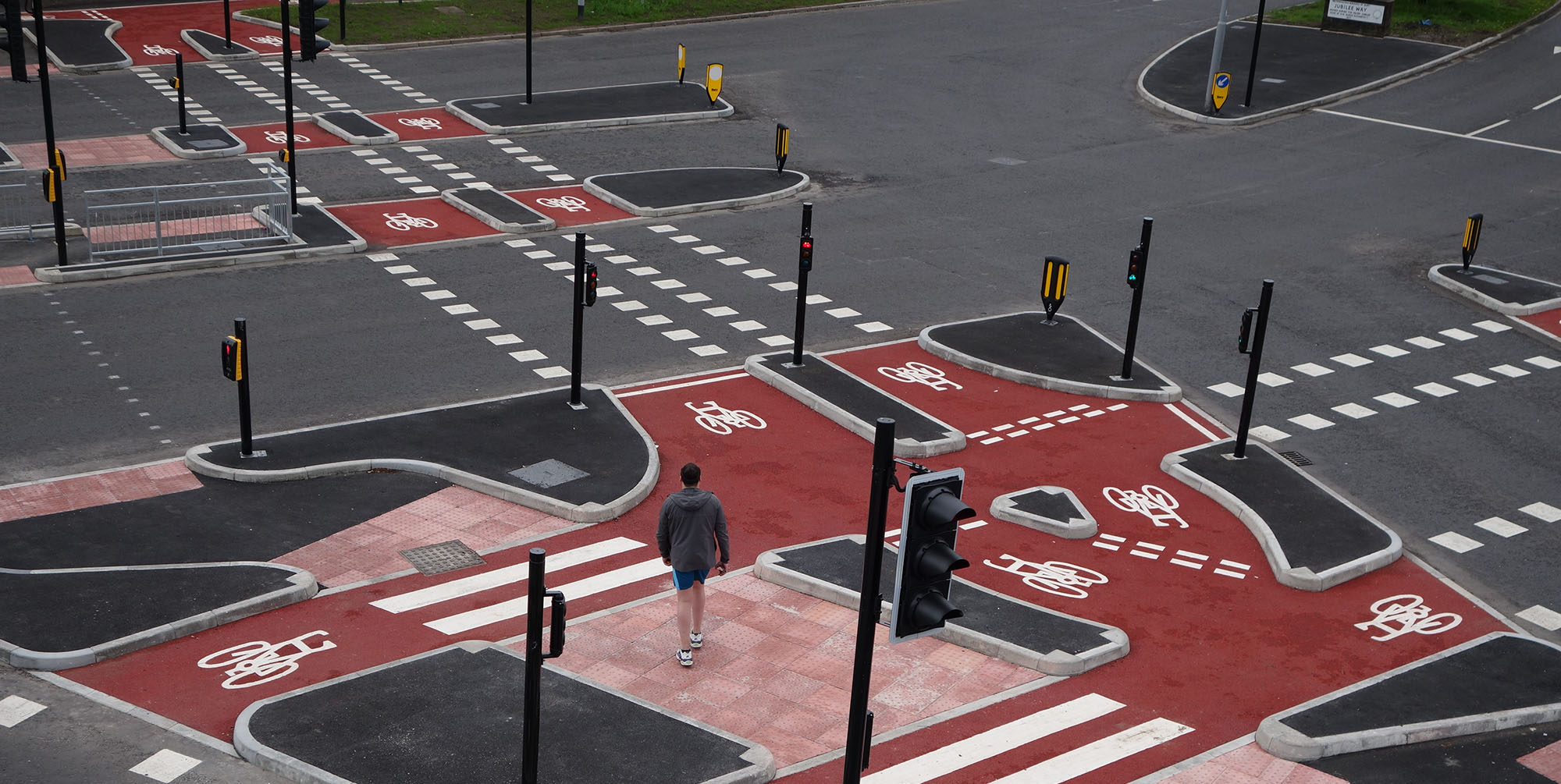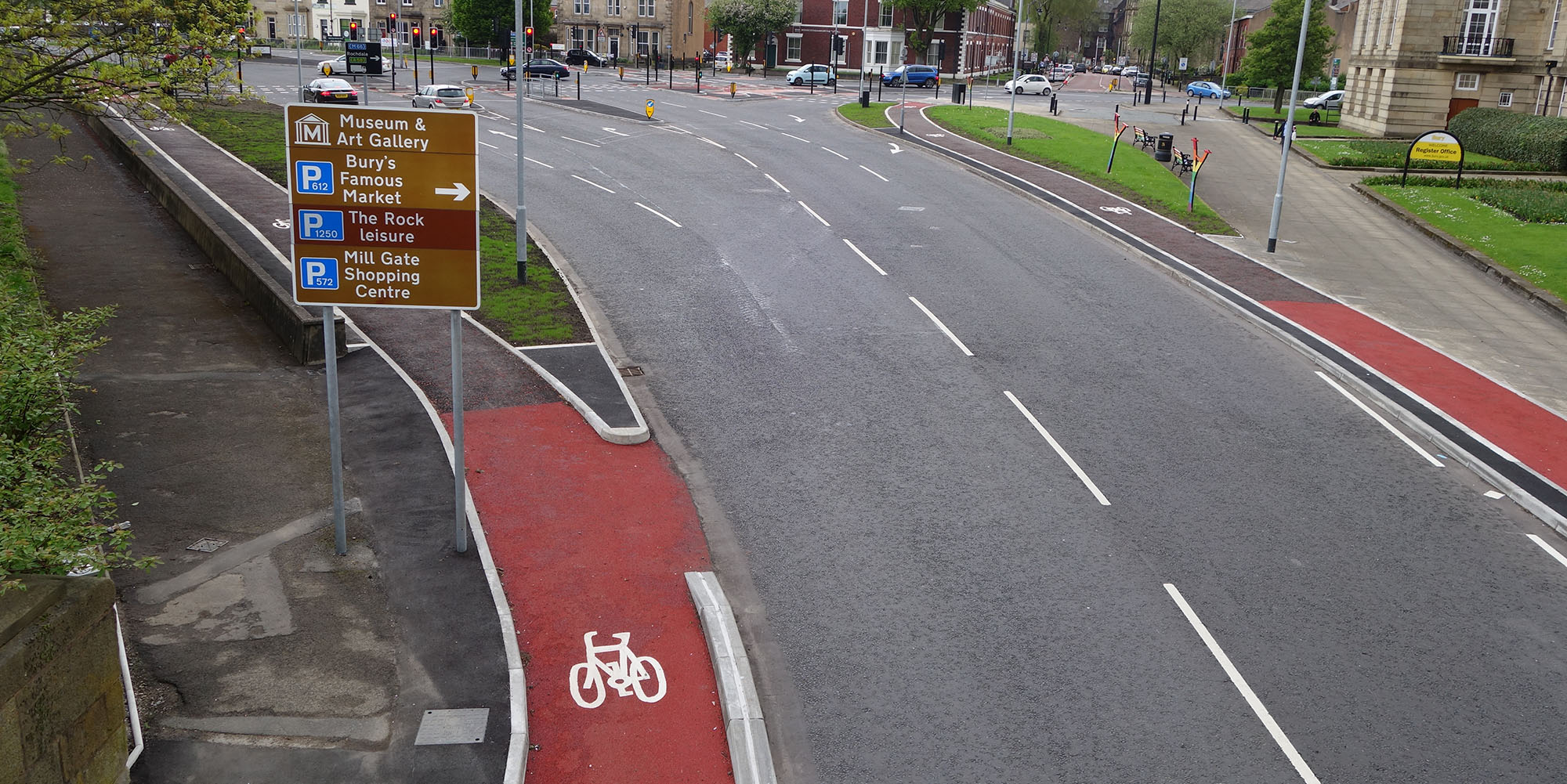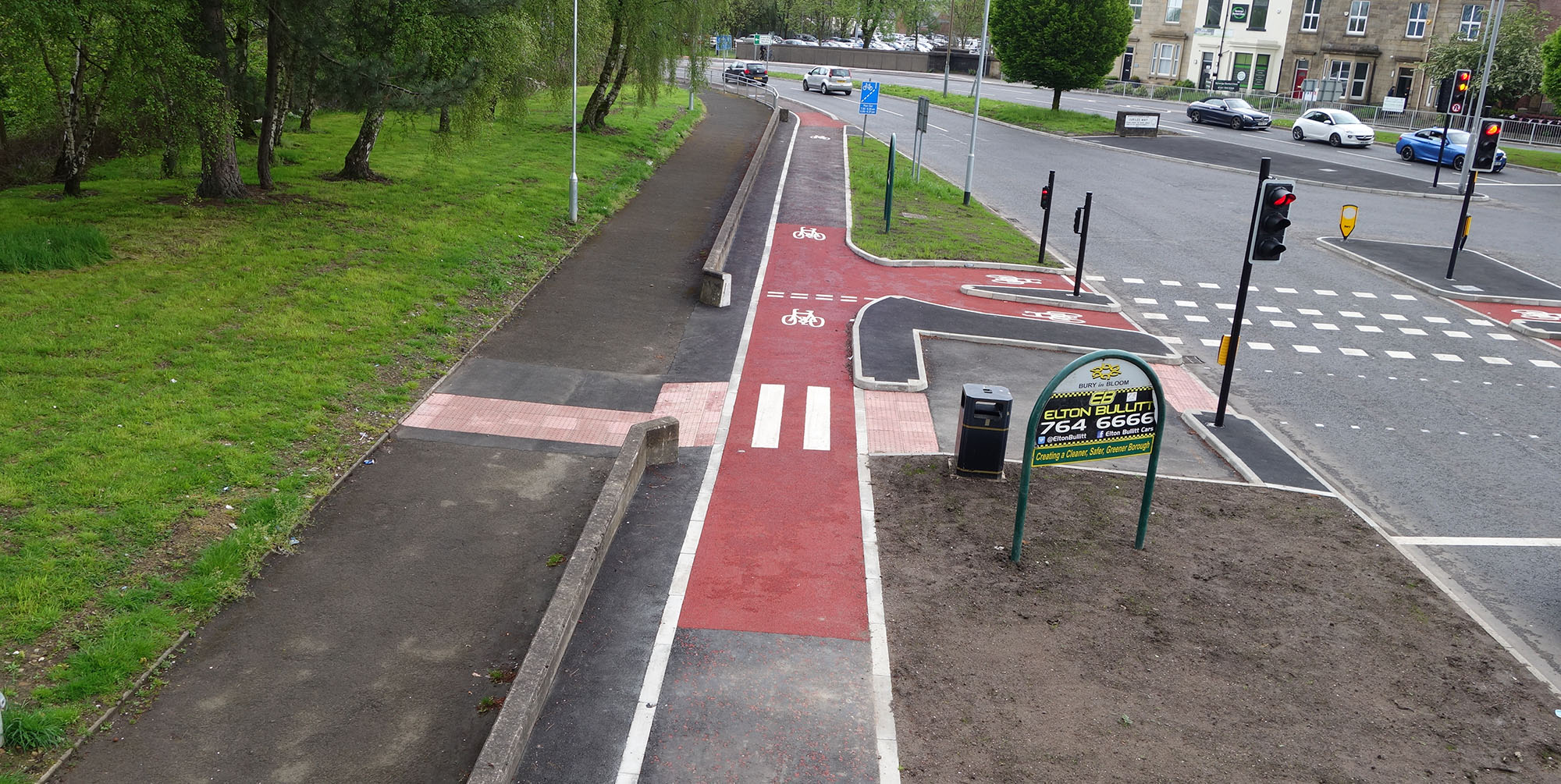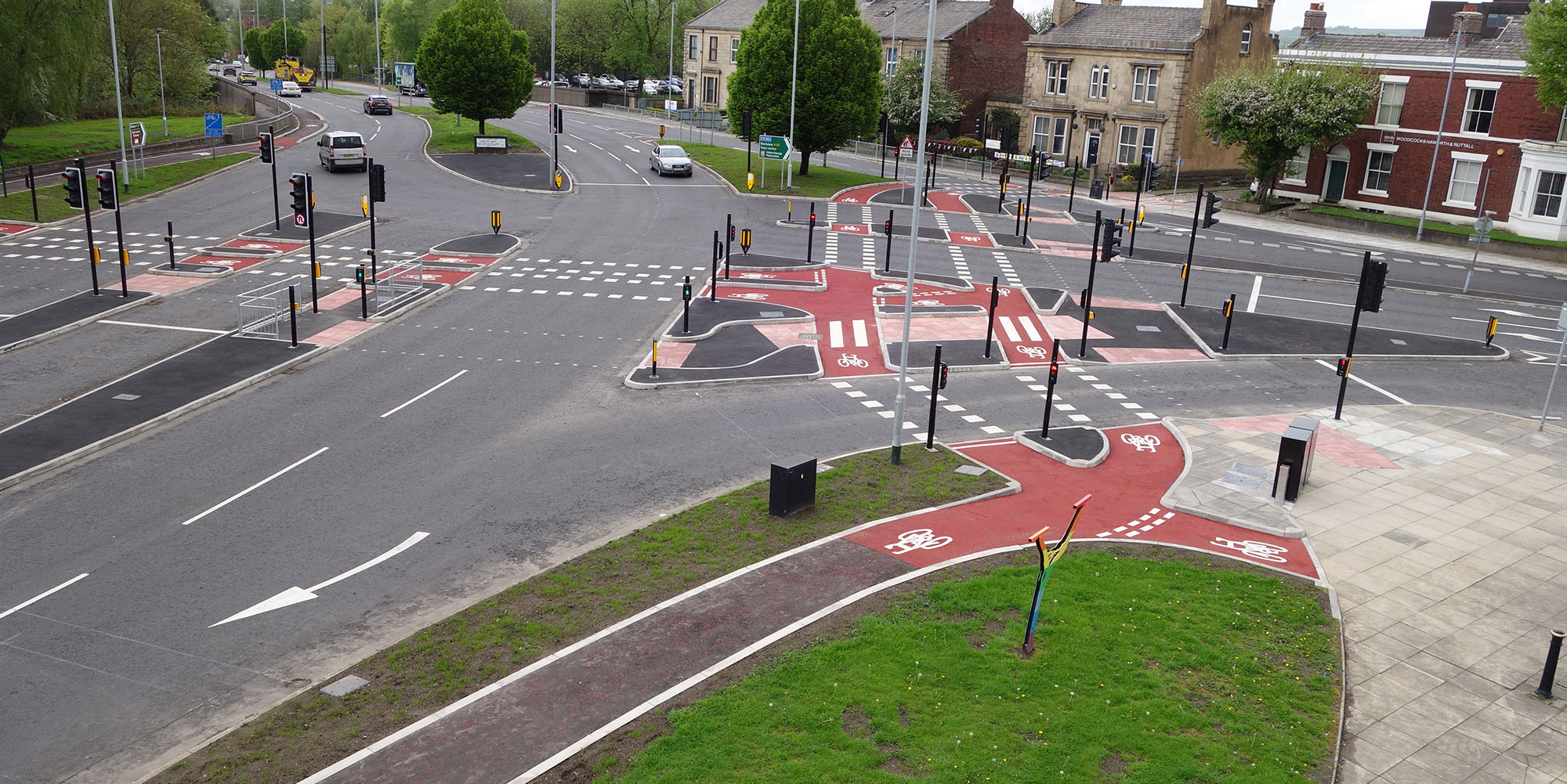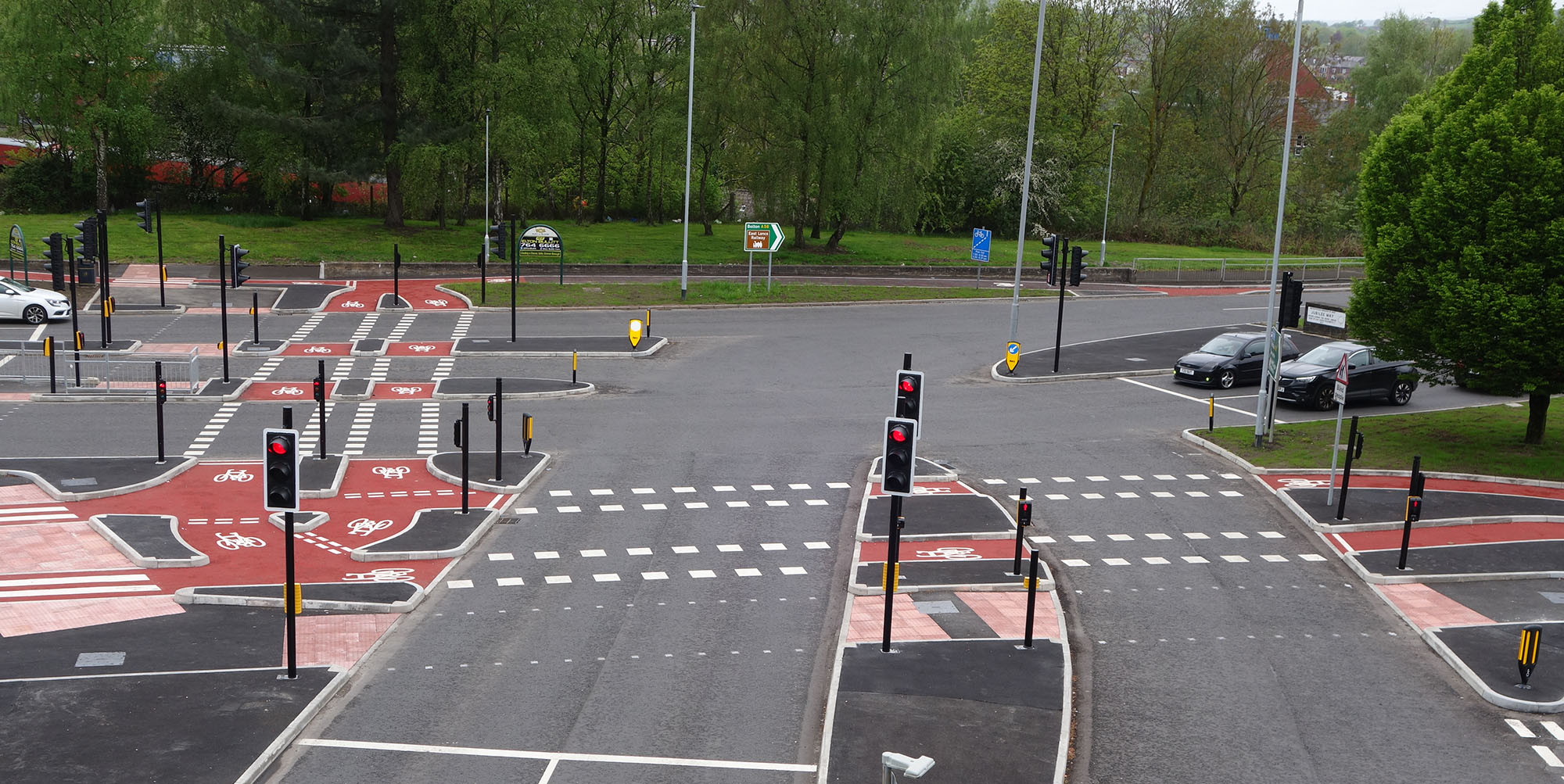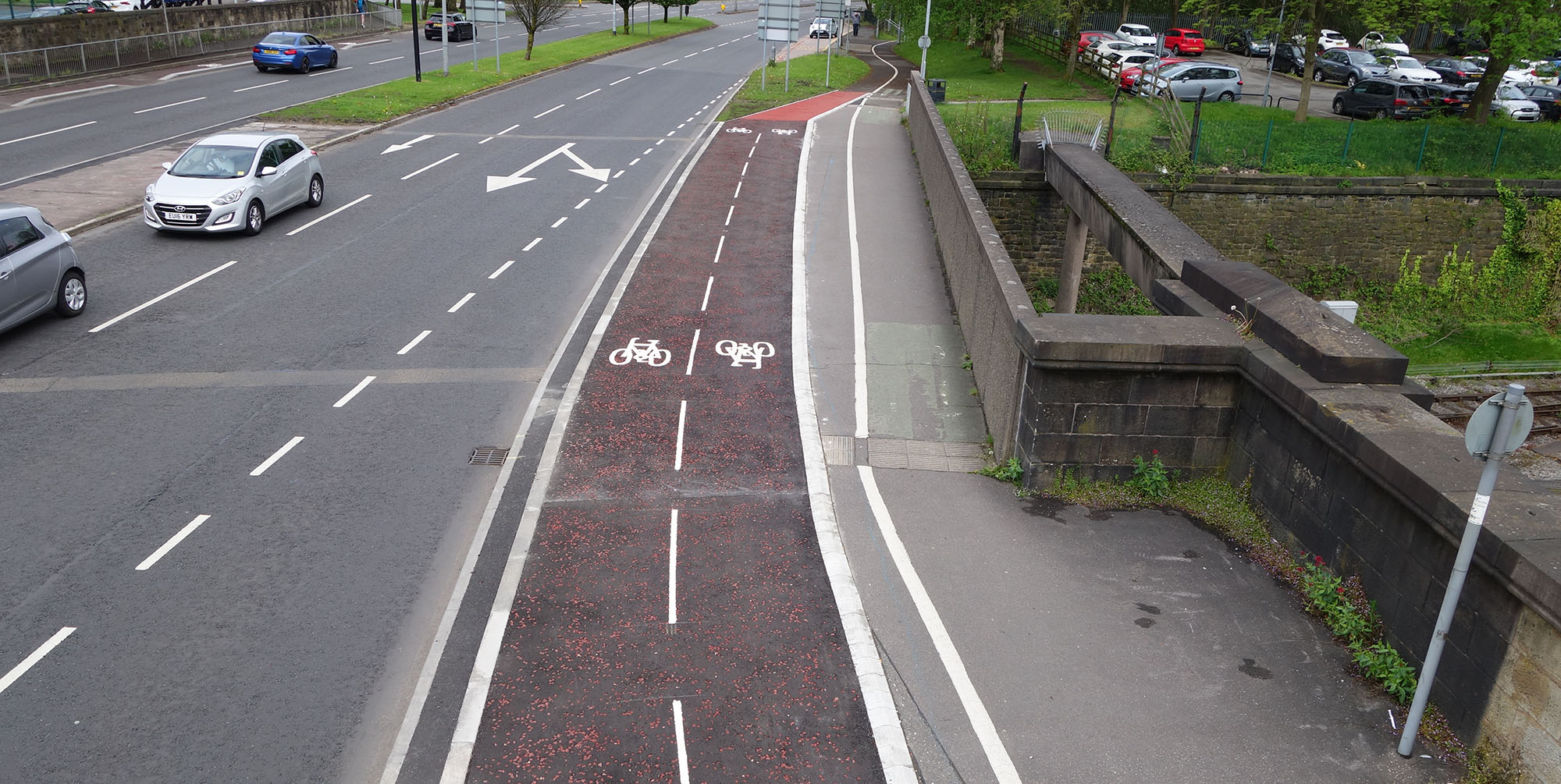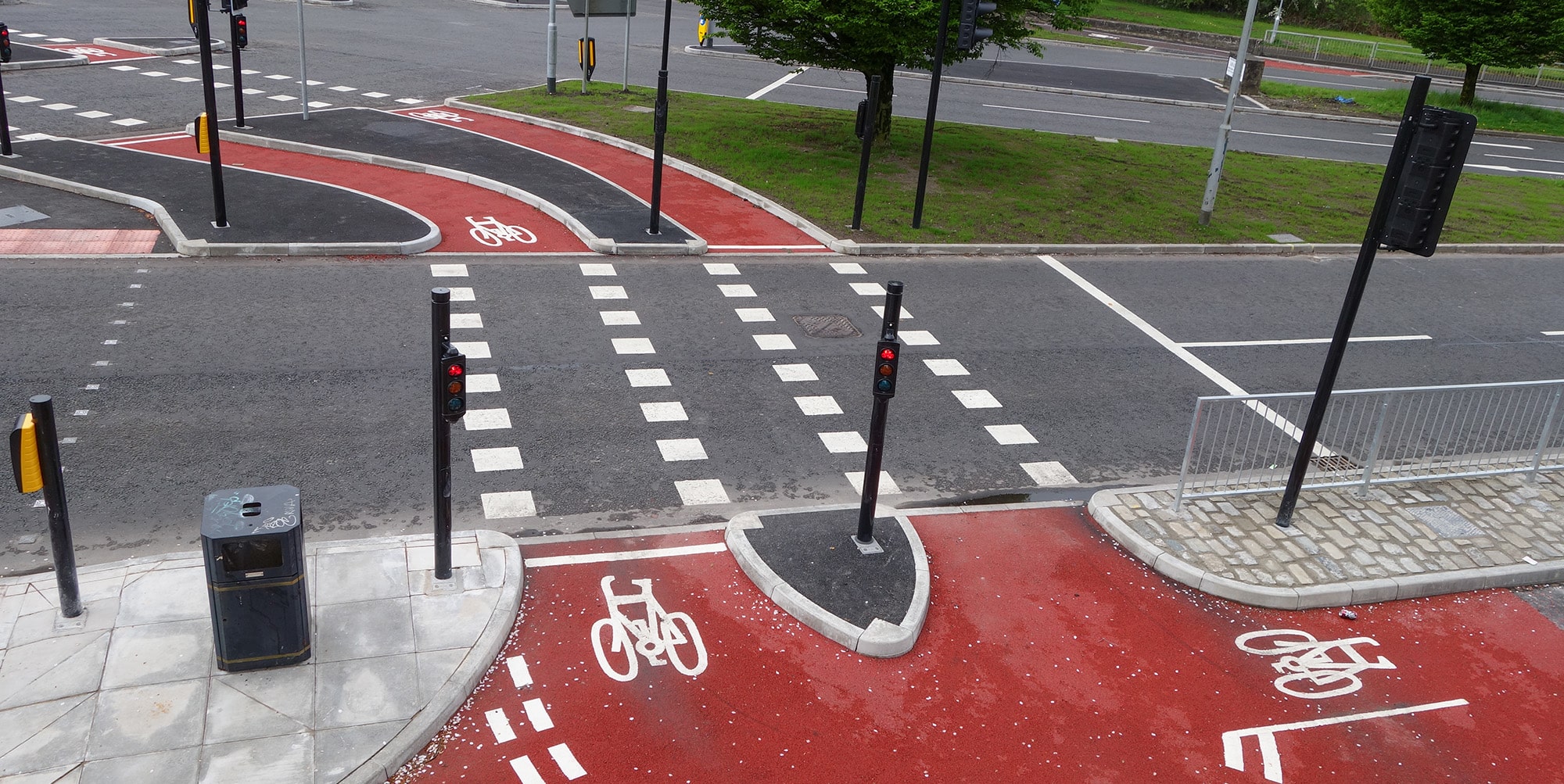In 2022, as part of our long-term highways framework with Bury Council, we undertook the upgrading and regenerating of the Jubilee Way Junction. Prior to construction, we assisted Bury Council in securing funding for the scheme by providing our knowledge and expertise to finalise planning and financial information needed for their bid.
This project included the reconfiguration of the junction layout to make it more cycle friendly by the use of cyclops junctions with all new bike lanes and signals. It also involved the drastic reshaping of traffic islands and new kerbing, paving, and surfacing throughout.
The scheme forms part of the Transport for Greater Manchester’s Bee Network initiative, aiming to establish a transport system in Greater Manchester similar to that of London. A key goal of this initiative is to not only make cycling a viable option for commuters but also an attractive one. Junctions like Jubilee Way play a crucial role in achieving this objective, as they connect major dual carriageways and the town centre just outside Bury Town Hall. Effectively dividing Bury in half, these junctions make cycling unavoidable for commuters, although they were previously hazardous, with few daring to attempt the crossing.
Due to the high volume of traffic the programming for the signal upgrade was very complex. Because of this, the council stipulated the existing signals needed to remain operational until the new ones could be brought online. In addition to this no lane could be occupied outside of 9:30 am – 15:00 pm. This required a careful traffic management plan in addition to a dedicated team of traffic safety officers, who attended site every day to set up, monitor and take down working areas safely. These factors, in conjunction with the very limited space, meant logistics on this scheme had to be carefully planned and effectively communicated between all parties to ensure the safety of operatives and the public.
The nearby leisure facilities, schools and being on the main path to the city centre created a steady flow of pedestrians to control. The pedestrian crossing was required to remain operational during the project as no temporary crossings were approved. This meant a clear pedestrian path had to be maintained through the working area for the entire duration of the works. Careful planning of work packages was necessary, splitting them into smaller sections and having operatives on site continuously communicating with the public and supporting those who needed assistance to ensure everyone could pass through the area safely.
Despite the programming restraints and the intense traffic management in place, all works were completed within the original programme and on budget.
